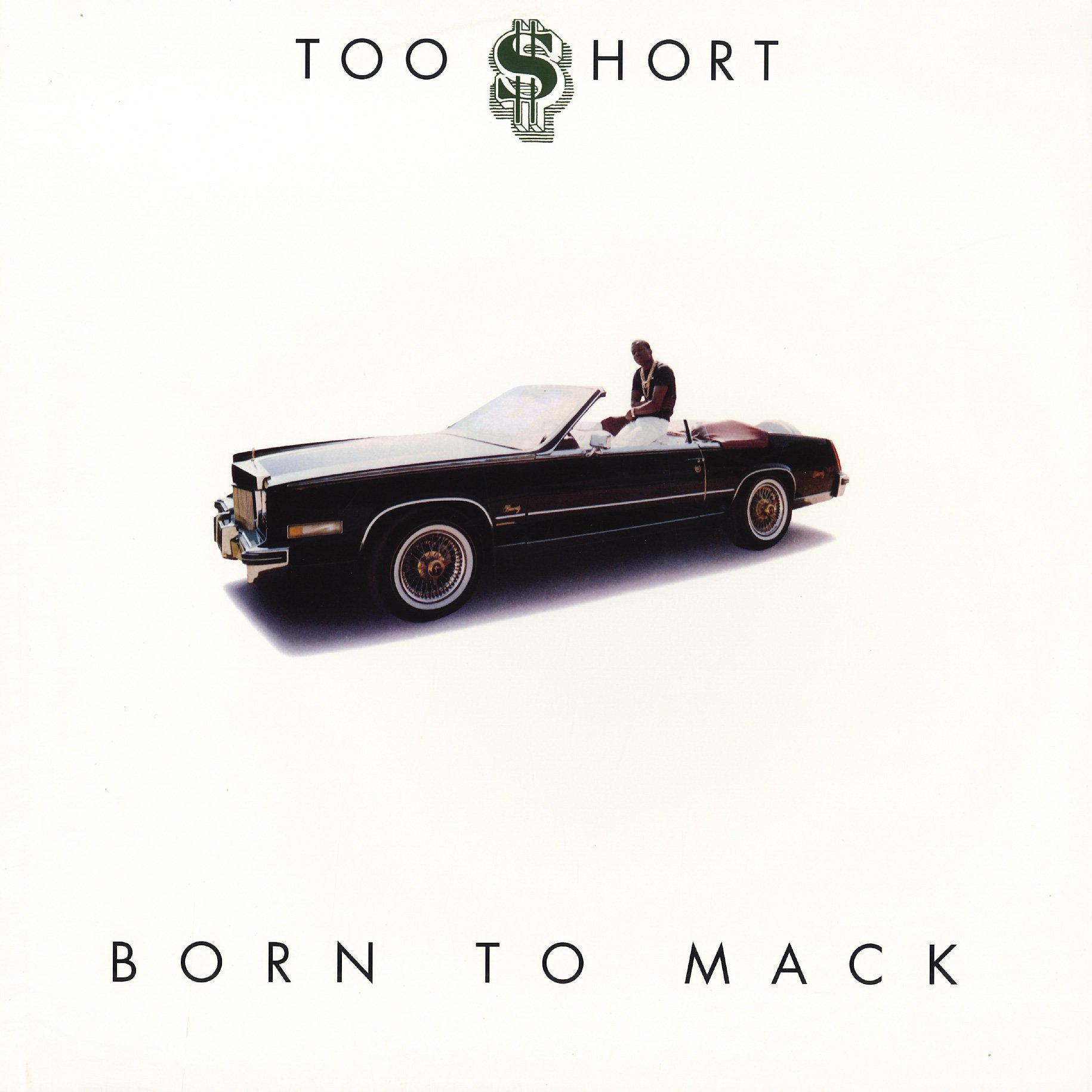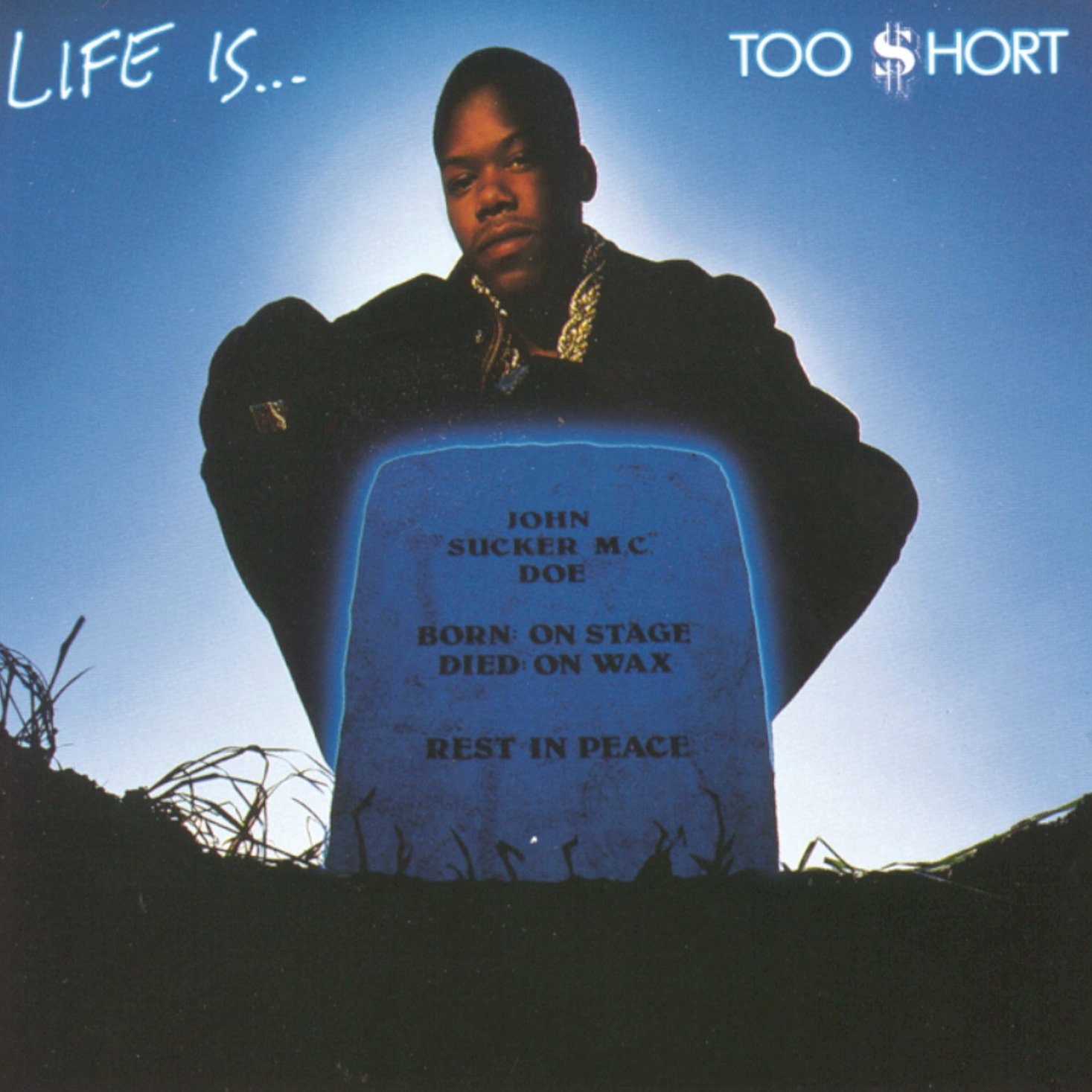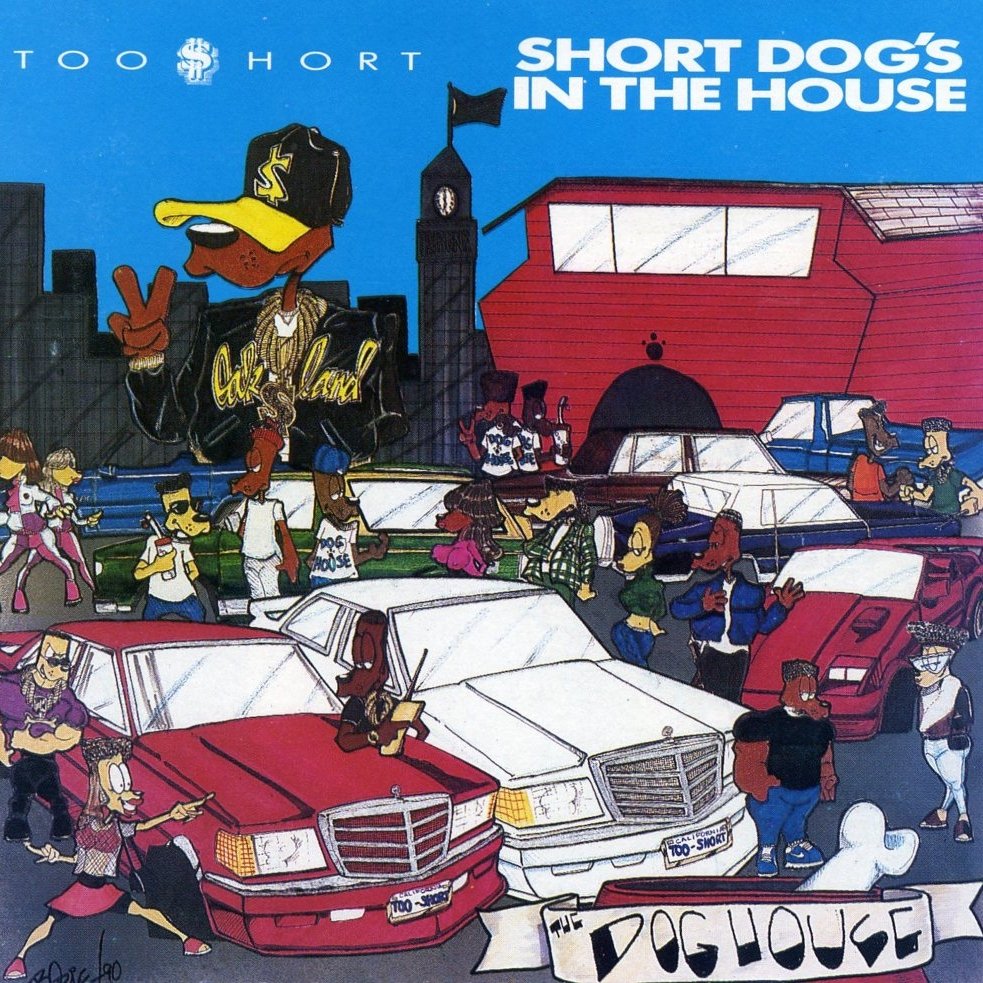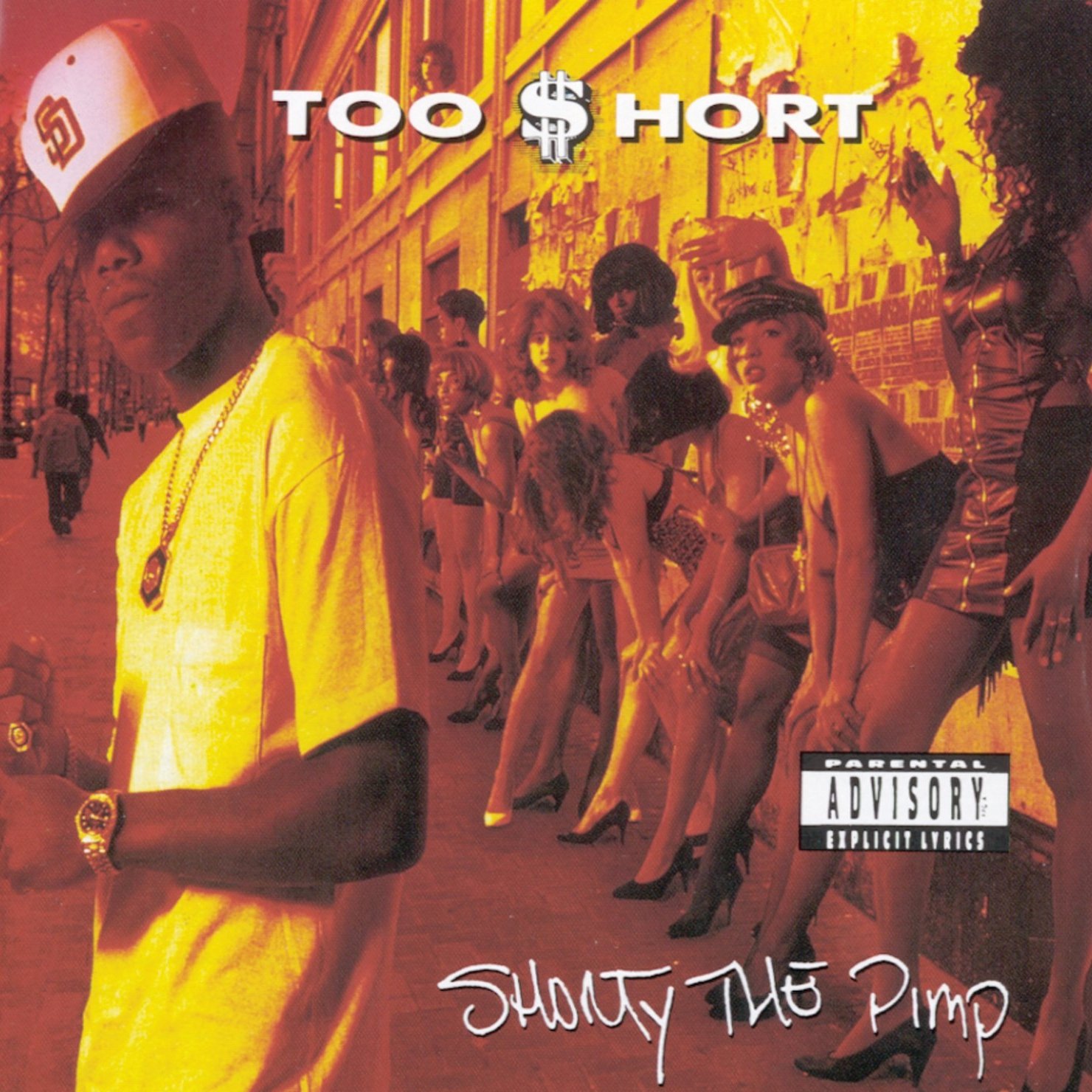Happy 30th Anniversary to Too $hort’s eighth studio album Get In Where You Fit In, originally released October 26, 1993.
When Todd “Too $hort” Shaw dropped Get In Where You Fit In in 1993, he was one of the few hip-hop artists that could really be considered a veteran that was still making quality music. Sure, hip-hop’s landscape was populated with rappers and DJs who had “been there” since the beginning, but few had a substantial body of work behind them. And of the “old school” artists who had been recording and releasing music since the Park Jam era, most of their best days were behind them.
Meanwhile, Get In Where You Fit In was Too $hort’s eighth studio album, which put the Oakland legend in a rarified air even a quarter of century ago. Very few, if any, hip-hop artists besides Too $hort could claim to have eight albums to their name back then. And very few, if any, were still going as strong as Too $hort was a decade into their careers. Get In Where You Fit In sat comfortably with the best albums that he’d ever made twenty-five years ago, and it still remains in that rarified air close to fifteen albums later. With Too $hort seemingly moving into the next phase of his career, Get In Where You Fit In both looks to the future and honors his past as an artist.
Get In Where You Fit In signaled either the end of the second act of Too $hort’s career or the beginning of the third. He’d moved well beyond distributing his music on his own locally, and he’d already established himself as a successful platinum artist that earned nationwide appeal without compromising his sound or content. The change wasn’t on the lyrical content end of things; aside from being a little older and little more seasoned by the world, Short was every bit the raunch-master that he was with Born To Mack (1987) and Short Dog’s In The House (1990). The shift on this album came from the perspective of the beats, and the type of tracks that he chose to rap over.
In some ways Get In Where You Fit In is Short Dog’s most “Oakland” album that he had released. Many of the songs are love letter to the city where he was raised and made his legend. Furthermore, the album features a laundry list of Oakland-based artists, including both established crewmembers as well as up-and-coming talent.
Musically, it was the first step in a new direction for Too $hort’s production. In his early days, Short had favored drum machine-driven tracks, much in the vein of Whodini and other old school hip-hop artists, gradually moving to sampled material. He’d often incorporated live instrumentation, but not to the extent that it appears on Get In Where You Fit In. With this album, he often uses a mix of the two, with the sample providing the backbone of the track, and his band, the Dangerous Crew, providing extra flourishes.
The album’s opening track “Don’t Fight the Intro” is a complete musical reconstruction of One Way’s “Don’t Fight the Feeling,” which Too $hort first sampled on a track of the same name on his 1989 album Life Is… Too $hort. Short recounts what even back then was a long and storied career, offering an assessment of his catalogue, even pointing out which projects didn’t work.
Listen to the Album:
Get In Where You Fit In is best known for “I’m a Player,” the album’s first single and in the great tradition of tracks heralding Short Dog’s macking ability. Over a sample and replaying of Bootsy Collins’ “Hollywood Squares,” Short applauds his own distinguished history and aptitude at getting females and laying down game. It’s far from uncharted territory for $hort, but it’s flawless in its execution. Musically, it’s one of $hort’s best compositions, a blend of Oakland funk with smooth G-Funk influences. Lyrically, Too $hort keeps things as simple and straight-forward as always, reminding listeners, “So if you ever see me rolling in my drop top Caddy / Throw a peace sign and say ‘Hey, pimp daddy!’ / ’Cause I never would front on my folks / I slow down and let the gold diggers count my spokes.” It’s one of the best singles that Too $hort ever released and on the, ahem, short-list of best songs that he ever recorded.
“Money In The Ghetto,” the album’s second single, is another solid entry and an extension of his earlier single “The Ghetto” from Short Dog’s In The House. Short Dog uses the track to address the misconception that even though conditions in neighborhoods like East Oakland aren’t always the best, its residents aren’t consumed by poverty and despair. He asserts that there are people who reside in these neighborhoods that are living well, and not just through less-than-legal means, and all are enjoying their lives. Over a sample of Kool & the Gang’s “Hollywood Swinging” (and extra keyboard flourishes), Short raps, “You better stop trippin’ on them stereotypes / ’Cause in the ghetto there’s a good life / We ain’t starving like Marvin, won’t see no roach / When you chill wit the rich folks.” Another highlight comes when Too $hort breaks down everyone who appears on U.S. currency, including his “old school homie” Alexander Hamilton.
The album features a few classic Too $hort rider anthems, the first of which is “Just Another Day.” It’s the only track on the album produced by someone outside of Too $hort’s immediate camp, as QD III (Quincy Jones’ son) works behind the board to create a smooth and mellow soundscape. The song functions as the Bay Area-precursor to Ice Cube’s “You Know How We Do It,” which QD III also produced.
Over what sounds like a replaying of Vaughan Mason’s “Bounce, Rock, Skate, Roll,” Too $hort uses the song to detail typical days in his life. He first recounts traversing the Bay Area from North to South, starting in Vacaville and heading to San Jose, only to journey back to Oakland. He then details catching a Warriors/Supersonics game and afterwards playing NBA Jams and dominoes with Sonics point guard/Oakland resident Gary Payton. He finishes the track explaining his experiences touring throughout the country, getting love in places like New Orleans, Birmingham, and Detroit.
Though “I’m a Player” is a prime example of Short detailing his sexual exploits, there are more songs about him not getting laid than there are about his conquests. “Gotta Get Some Lovin’” is a relatively light-hearted entry, as he details trying to find ways to survive through a dry spell. Meanwhile, on the more confrontational “All My Bitches Are Gone,” a duet with producer/rapper Ant Banks, the duo detail their frustration with all of their women deciding to bounce, while stating with confidence that their game is so strong that they’ll be able to find a bevy of new companions.
“Blowjob Betty” is one of the album’s best songs, but somewhat of an odd inclusion. It’s a remake/reworking of a track from his Raw, Uncut, and X-Rated album. Rather than utilizing drum-machine driven slaps, this time he rhymes over a sample of the horn-driven “Stalag 13” riddim (best known as the basis for dancehall artist Tenor Saw’s “Ring The Alarm”) and a live bassline and synthesizers. It’s another darkly humorous track, as Short Dog describes his encounters with Betty who’s known for her, ahem, talents at delivering oral pleasure. The song ends with Betty’s death as Too $hort realizes that he “busted a nut and killed a bitch.” Again, not the most enlightened song ever recorded, but Too $hort was always able to pull stuff like this without sounding like a complete cad.
Enjoying this article? Click/tap on the album covers to explore more about Too $hort:
Short isn’t done paying tribute to his past, as “Playboy Short” is another cover of one of his earliest jams—the song was originally the final track on his very first album, Don’t Stop Rappin’ (1983). Short makes minor tweaks to the song lyrics, but its presence on the album seems to be about his progression, production-wise, and the timelessness of his work. The fact is that the 10-year old lyrics sound just as at home in 1993 as they did a decade before. Musically, he eschews the pounding drums and synths for a smoother backdrop, utilizing a live piano and bass to create another late-night rider anthem.
As much as Get In Where You Fit In is about showcasing his continued relevance as an artist, it’s also about showcasing up-and-coming Bay Area talent, particularly throughout the album’s second half. The aptly named “Dangerous Crew” is a posse cut featuring the core of the eponymous crew, including Spice 1, Banks, and Goldy (formerly known as Mhisani). Musically, the Dangerous Crew production collective does an excellent job at re-creating Funkadelic’s “Freak of the Week.” Short Dog expresses his disdain for artists that don’t utilize live production, rapping, “I'm into something that your fake ass never can handle / With your SP-12 and your raggedy samples / Better stick with the James Brown and pay him / ’Cause the JD 800 ain’t even playing.” As funny as the lines are, they sound a little weird considering how much sampling is used on the album.
The album’s eight-minute title track serves multiple purposes. First, it’s a dis track to Pooh Man/MC Pooh, a former member of the Dangerous Crew who fell out with the collective possibly over contractual issues. Pooh unloaded on the crew for what seemed like half of his 1993 album Judgment Day, but Short pretty much handles him with one lengthy verse. Short taunts Pooh, boasting, “We stole all your money, and all your songs / Done you like a ho and then sent your ass home / One punk came and went / Had to fire the ho, but I’m still a pimp.”
The second purpose of the track is to allow the Bad-N-Fluenz crew to get loose on the mic. Made up of Rappin’ Ron and Ant Diddley Dog, the pair had become well known in the Oakland scene for the ability to rap seemingly endlessly. Here they pass the mic back and forth, each kicking a pair of lengthy verses. Rappin’ Ron starts by giving an instructional lesson on street survival in the streets of Oakland, switching from a deliberate flow to tongue-twisting rhymes at the drop of a dime, rapping, “Don't ever go out like another sucker / You gotta show everybody that you the baddest motherfucker / Show them n***as you the biggest boss / And ain't no slipping stopping the tripping just popping a clip and breaking them n****s off.” Meanwhile, Ant shows his own skills with raps like, “But ain’t no stopping this fool, I’m on a rampage / Breaks out in a damn rage, so don't try to stand, break / Sit in the range, you’ll get maimed, I don’t fight fair / Strike with a mic, in a psych is a nightmare.”
“Way Too Real” features the talents of Father Dom, another underrated Oakland artist who’s been on his grind for a while, first releasing a self-titled album in 1991. Here he appears with Short Dog to display his player credentials, bragging about his macking abilities over some synth heavy Oakland funk. The album closes with “Oakland Style,” essentially a solo song by F.M. Blue, who utilizes his smooth delivery over a sample of Silver Connection’s “Heart of Stone.”
Get In Where You Fit In was an unqualified success: it was certified platinum and was the first Too $hort album to reach #1 on Billboard’s Top Hip-Hop/R&B charts. Too $hort continued to plug away in his new musical direction after Get In Where You Fit In, and also changed the location of his base of operations: Too $hort and much of the Dangerous Crew relocated to Atlanta in 1994. Though he remained true to his Oakland roots on albums like Cocktails (1995), he began infusing some of the burgeoning southern hip-hop sound as well.
With Gettin’ It (Album Number Ten) (1996), he “retired” for the first time in what turned out to be a move to get out of his Jive Records contract. He unretired a few years later, and even continued distributing albums through Jive for another 10 years or so, continuing to cater to his audience and even release some of the most successful songs of his career, like 2006’s “Blow the Whistle.”
The triumph of Get In Where You Fit In set the stage for Short’s sustained career longevity. It further demonstrated why Too $hort has lasted so long: he’s always creating music that remains true to his roots, while knowing what his audience is looking for. You don’t become a veteran with 25-plus albums to your name without knowing exactly where you fit.
LISTEN:
Editor's note: this anniversary tribute was originally published in 2018 and has since been edited for accuracy and timeliness.





